A low-fiber diet aims to reduce the amount of fiber consumed each day, which can be beneficial for individuals with certain health conditions. Low fiber foods include white bread, skinless vegetables, seedless fruits, and some dairy products. Following a low-fiber diet may help give the digestive system a rest, reduce abdominal pain and other symptoms, and ease the production of stool. However, it’s important to note that low-fiber diets are not meant for weight loss and should only be followed under the guidance of a healthcare professional.
Key Takeaways:
- Low-fiber diets can be beneficial for individuals with certain health conditions.
- Low fiber foods include white bread, skinless vegetables, seedless fruits, and some dairy products.
- Following a low-fiber diet may help reduce abdominal pain and other symptoms.
- Low-fiber diets should only be followed under the guidance of a healthcare professional.
- Low-fiber diets are not intended for weight loss purposes.
What is a Low Fiber Diet?
A low fiber diet, also known as a low residue diet, limits the amount of fiber consumed each day. The purpose of this diet is to reduce the undigested food moving through the gut, ease the workload of the digestive system, and decrease the amount of stool produced. A low fiber diet may be recommended for individuals with gastrointestinal (GI) conditions, those preparing for surgery such as a colonoscopy, or those experiencing certain symptoms like abdominal pain and diarrhea.
In the past, the American Academy of Nutrition and Dietetics’ Nutrition Care Manual included low residue diets, but it has since been removed. However, some studies suggest that low fiber diets may still have benefits in certain cases.
To better understand this type of diet, let me explain what fiber is. Fiber is a type of carbohydrate that the body does not digest fully. It can be found in many plant-based foods like fruits, vegetables, whole grains, legumes, nuts, and seeds.
There are two types of fiber: soluble fiber and insoluble fiber. Soluble fiber dissolves in water and forms a gel-like substance, while insoluble fiber does not dissolve and helps add bulk to the stool. Both types of fiber play important roles in maintaining a healthy digestive system.
Did you know? The main difference between a low fiber diet and a regular diet is that a low fiber diet limits or avoids foods that are high in fiber, such as whole grains, fruits with skin or seeds, and raw vegetables.
The Benefits
A low fiber diet can provide relief for individuals with specific health conditions or those preparing for surgery. It can help reduce abdominal pain, diarrhea, and other uncomfortable symptoms associated with gastrointestinal (GI) conditions like irritable bowel syndrome (IBS), Crohn’s disease, ulcerative colitis, and diverticulitis. Additionally, it may be recommended before surgery, such as a colonoscopy, to make the procedure easier and more effective.
The Recommended Fiber Intake
While a low fiber diet focuses on reducing fiber intake, it’s important to note that some fiber is still necessary for overall health. Therefore, the recommended daily intake of fiber for adults is typically around 25-30 grams per day. However, on a low fiber diet, fiber intake is typically limited to less than 10 grams per day.
Remember, it’s crucial to consult with a healthcare professional or registered dietitian before starting a low fiber diet to receive personalized advice and guidance based on your specific needs and condition.
Now that we have a better understanding of what a low fiber diet is, in the next section, we will explore the different types of fiber and their effects on the gut.
Types of Fiber and Their Effects on the Gut
When it comes to dietary fiber, there are two main types: soluble fiber and insoluble fiber. Understanding the differences between these two types can help you make informed choices about the foods you consume.
Soluble Fiber
Soluble fiber, as the name suggests, dissolves in water to form a gel-like substance during digestion. This gel-like consistency helps slow down the absorption of nutrients in the gut, which can have several benefits for your overall health.
Some common sources of soluble fiber include:
- Oats
- Apples
- Beans
Consuming foods rich in soluble fiber may help regulate blood sugar levels, lower cholesterol levels, and promote a feeling of fullness, making it easier to manage your weight.
Insoluble Fiber
In contrast, insoluble fiber does not dissolve in water and remains relatively intact throughout the digestive process. This type of fiber adds bulk to the stool, promoting regular bowel movements and preventing constipation.
Common sources of insoluble fiber include:
- Whole grains
- Nuts and seeds
- Vegetables
Insoluble fiber can help maintain a healthy digestive system by supporting regular bowel movements and reducing the risk of conditions such as hemorrhoids and diverticulosis.
By including both soluble and insoluble fiber in your diet, you can support a healthy gut and overall well-being.
| Fiber Type | Soluble Fiber | Insoluble Fiber |
|---|---|---|
| Characteristics | Dissolves in water, forms a gel-like substance | Does not dissolve in water, adds bulk to stool |
| Sources | Oats, apples, beans | Whole grains, nuts and seeds, vegetables |
| Benefits | Regulates blood sugar, lowers cholesterol, promotes satiety | Promotes regular bowel movements, prevents constipation |
Low-Fiber Foods to Include in Your Diet
When following a low fiber diet, it’s important to choose foods that are low in fiber to help reduce the workload on your digestive system. Here are some examples of low fiber foods that you can include in your diet:
“A low fiber diet helps in reducing the amount of fiber consumed, which can be beneficial for individuals with certain health conditions.”
Low-Fiber Food Options
1. White bread: Opt for bread made from refined grains without added fiber.
2. White pasta: Choose pasta made from refined grains instead of whole wheat.
3. White rice: Go for polished white rice instead of brown or wild rice.
4. Low fiber cereals: Look for cereals that have less than 2 grams of fiber per serving.
5. Canned or boiled vegetables: Pick vegetables that are soft and are canned or boiled to reduce their fiber content.
6. Seedless and skinless vegetables: Remove seeds and peel the skin from fruits and vegetables to lower their fiber content.
7. Fruit juices without pulp: Enjoy fruit juices that have been strained to remove any pulp.
8. Cantaloupe and honeydew melon: These melons are low in fiber and can be a refreshing addition to your diet.
9. Peeled fruits like apples and pears: Remove the skin from apples, pears, and similar fruits to reduce their fiber content.
It’s important to note that while these low fiber foods can be included in your diet, they may not provide the same nutritional benefits as high fiber foods. It’s recommended to consult with a healthcare professional or registered dietitian for personalized guidance.
| Foods | Amount of Fiber per Serving |
|---|---|
| White Bread | 0.8 grams |
| White Pasta | 0.6 grams |
| White Rice | 0.4 grams |
| Low Fiber Cereals | Less than 0.5 grams |
| Canned or Boiled Vegetables | Varies depending on the vegetable |
| Cantaloupe | 0.8 grams |
| Honeydew Melon | 0.6 grams |
| Peeled Apples | 0.5 grams |
| Peeled Pears | 0.6 grams |
These values are approximate and can vary based on the specific product and serving size.
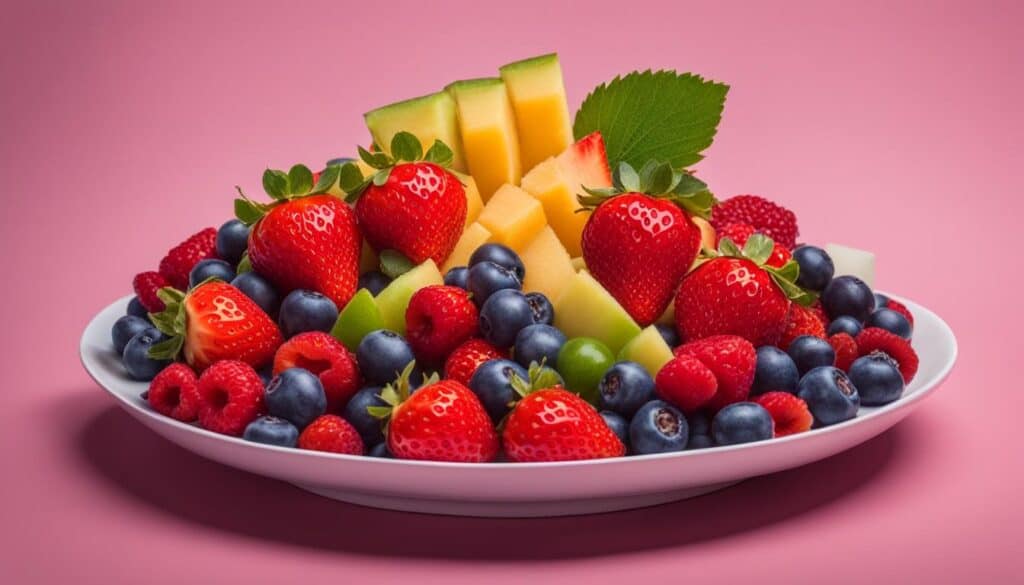
Tips for Following a Low-Fiber Diet
When embarking on a low-fiber diet, it’s crucial to seek guidance from a healthcare professional or registered dietitian to ensure you’re making informed choices that meet your specific needs. Here are some helpful tips for managing fiber intake and sticking to your low-fiber meal plan:
- Choose low-fiber foods: Opt for foods that contain less than 2 grams of fiber per serving. This includes white bread, refined grains like white pasta and rice, and low-fiber cereals.
- Peel fruits and vegetables: Removing the skin or peel can significantly reduce the fiber content. Enjoy seedless and skinless fruits such as apples and pears.
- Avoid trigger foods: Identify and avoid foods that may exacerbate your symptoms. Keep track of what you eat and note any adverse reactions, adjusting your meal plan accordingly.
- Stay hydrated: Drinking an adequate amount of water can help prevent constipation, a common side effect of a low-fiber diet. Aim for at least eight glasses of water per day.
- Avoid insoluble fibers: Insoluble fibers, found in foods like whole grains and some vegetables, can contribute to discomfort. Limit or avoid these foods to manage your fiber intake.
Meeting with a registered dietitian can provide you with personalized meal plans and expert guidance on navigating a low-fiber diet successfully. They can help ensure you’re meeting your nutritional needs while managing your fiber intake effectively.
Remember, while a low-fiber diet can provide relief for certain health conditions, it’s essential to work closely with a healthcare professional to ensure it’s suitable for your specific situation. They will guide you on how long to follow the diet and when it’s appropriate to gradually reintroduce fiber-rich foods.
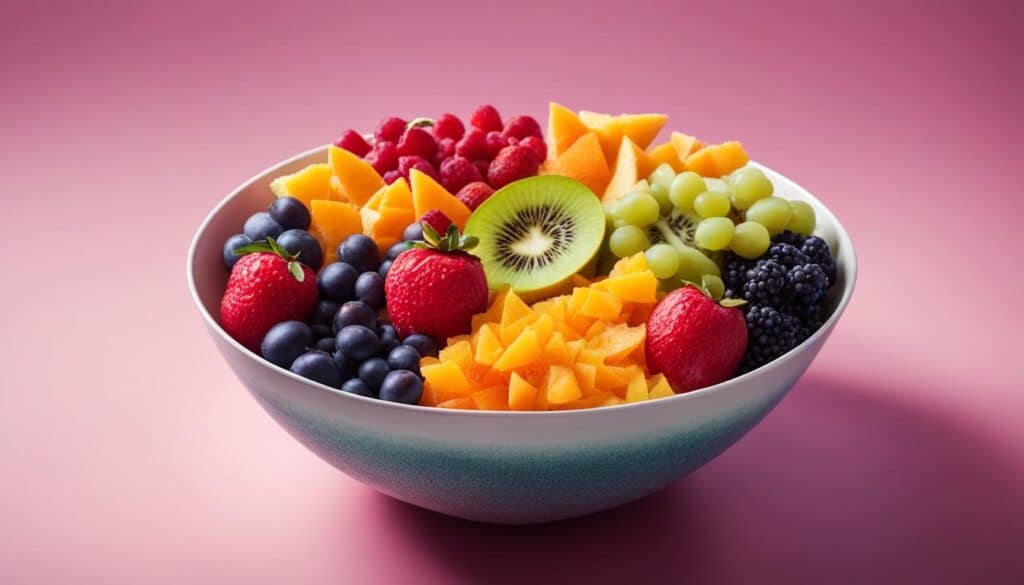
Benefits of a Low-Fiber Diet for Certain Health Conditions
A low fiber diet can offer significant benefits for individuals with particular health conditions, especially those affecting the gastrointestinal (GI) system. By reducing fiber intake, this type of diet can effectively manage symptoms associated with conditions such as irritable bowel syndrome (IBS), Crohn’s disease, ulcerative colitis, and diverticulitis.
Individuals with these conditions often experience abdominal pain, bloating, and irregular bowel movements. Following a low fiber diet can help alleviate these symptoms by minimizing the workload on the digestive system and reducing the frequency and volume of stool production.
Moreover, a low fiber diet is frequently recommended as a preparation strategy before certain surgical procedures, including colonoscopies. By limiting fiber intake, the diet aids in emptying the colon and facilitating clear visualization of the intestinal lining during the procedure.
It’s essential to note that a low fiber diet is not intended for weight loss purposes and should only be undertaken under the guidance and supervision of a healthcare professional.
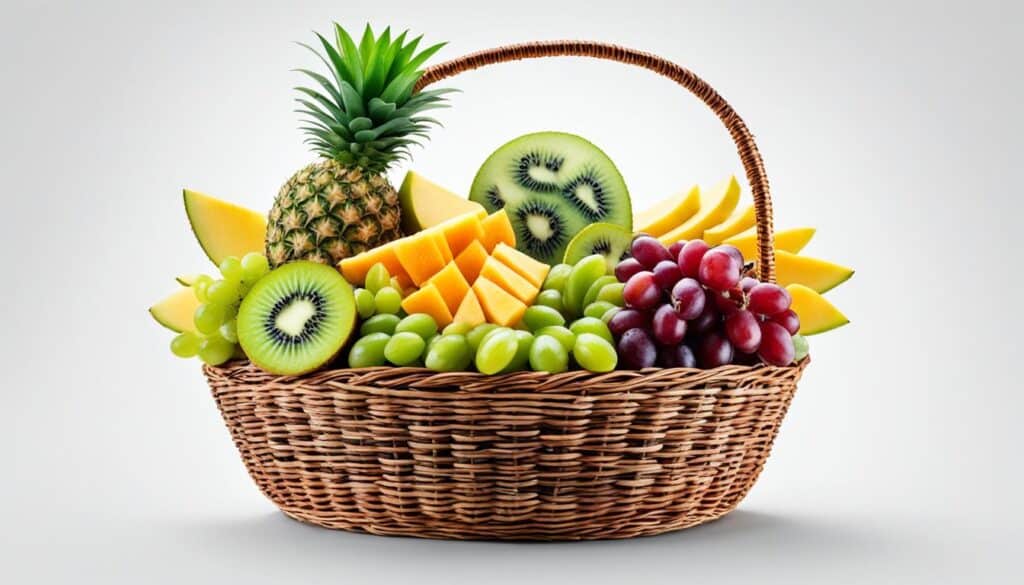
Gradually Reintroducing Fiber into Your Diet
After following a low fiber diet, it’s important to gradually reintroduce fiber back into your diet. This can help improve symptoms and provide numerous benefits, such as decreasing inflammation, improving gut microbiome, and reducing the risk of colorectal cancer. Start by adding a small portion of one high fiber food per day and monitor how your body reacts.
“Reintroducing fiber into your diet after following a low fiber diet can have significant health benefits.”
The amount of fiber needed varies based on factors like age, sex, and underlying health conditions. It’s recommended to consult with a healthcare professional or registered dietitian for personalized guidance.
Tips for Gradually Reintroducing Fiber:
- Add one high fiber food at a time
- Start with small portions
- Monitor how your body reacts
- Increase fiber intake gradually
- Stay hydrated
Reintroducing fiber into your diet should be done gradually to avoid digestive discomfort. It’s important to listen to your body and make adjustments accordingly. A balanced diet that includes a variety of high fiber foods can provide numerous health benefits.
| Fiber-Rich Foods | Fiber Content per Serving |
|---|---|
| Avocado | 10 grams |
| Black beans | 15 grams |
| Chia seeds | 10 grams |
| Quinoa | 5 grams |
| Broccoli | 5 grams |
| Whole wheat bread | 4 grams |
| Pear | 5 grams |
| Almonds | 4 grams |
Remember to include other sources of fiber gradually, such as whole grains, legumes, fruits, and vegetables. Consult a healthcare professional or registered dietitian for personalized advice to reintroduce fiber safely and effectively into your diet.
Low Fiber Diet for Colonoscopy Preparation
A colonoscopy is a procedure that involves examining the colon and rectum using a thin, flexible tube with a camera. To ensure clear visualization, your doctor may recommend a low fiber diet in the days leading up to the procedure.
During colonoscopy preparation, it’s important to avoid foods that could leave residue in the colon. Low fiber foods are typically easier to digest and can help empty the colon effectively. Here are some examples of low fiber foods to include in your diet:
- Refined carbohydrates such as white bread, white pasta, and white rice
- Boiled or steamed vegetables
- Fruit and vegetable juices without pulp
- Lean protein sources like skinless chicken or fish
- Some dairy products like low-fat yogurt or cottage cheese
By following a low fiber diet as instructed, you can help ensure that your colon is clear for the colonoscopy procedure. Always consult with your doctor or healthcare team for specific instructions and guidelines tailored to your individual needs.
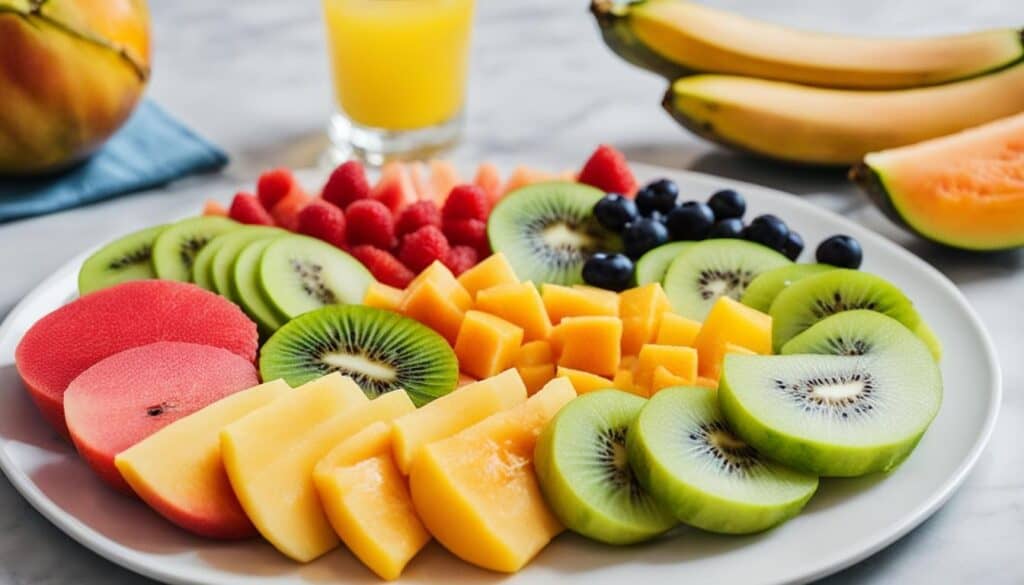
Remember, proper preparation is crucial for a successful colonoscopy. It’s important to adhere to the recommended diet and clear liquid instructions to ensure accurate examination of your colon and rectum.
Can You Eat Oatmeal on a Low Fiber Diet?
Oatmeal is a popular breakfast option known for its nutritional value and heart-healthy benefits. But can you have oatmeal on a low fiber diet? Let’s find out.
Oats are mostly high in soluble fiber, which is less likely to irritate the intestines compared to insoluble fiber. Soluble fiber absorbs water and forms a gel-like substance, which can help regulate bowel movements and promote digestive health.
When following a low fiber diet, it’s recommended to eat a small portion of oatmeal and monitor any symptoms afterward. Start with a quarter-cup serving and see how your body reacts. If oatmeal doesn’t cause any discomfort, it can be included in a low fiber diet.
Some individuals may be more sensitive to fiber and may experience bloating, gas, or other digestive issues after consuming oatmeal. If you notice any adverse reactions, it’s best to consult with a healthcare professional or registered dietitian for personalized advice.
Remember, every person’s body is unique, and individual reactions to foods may vary. What works for one person may not necessarily work for another. Seeking guidance from a healthcare professional or registered dietitian can help ensure that your low fiber diet meets your specific needs and goals.
The Benefits of Oatmeal on a Low Fiber Diet
Oatmeal has several benefits that make it a suitable option for a low fiber diet:
- Rich in nutrients: Oatmeal is packed with essential vitamins, minerals, and antioxidants that support overall health.
- Heart-healthy: Oats contain beta-glucan, a type of soluble fiber that has been shown to help lower cholesterol levels and reduce the risk of heart disease.
- Sustained energy: Oatmeal provides a steady release of energy, keeping you feeling fuller for longer and preventing blood sugar spikes.
- Versatile: Oatmeal can be enjoyed plain or topped with various low fiber fruits or toppings to add flavor and variety.
Incorporating oatmeal into your low fiber diet can provide a nutritious and satisfying meal option. Just remember to listen to your body’s response and make adjustments accordingly.
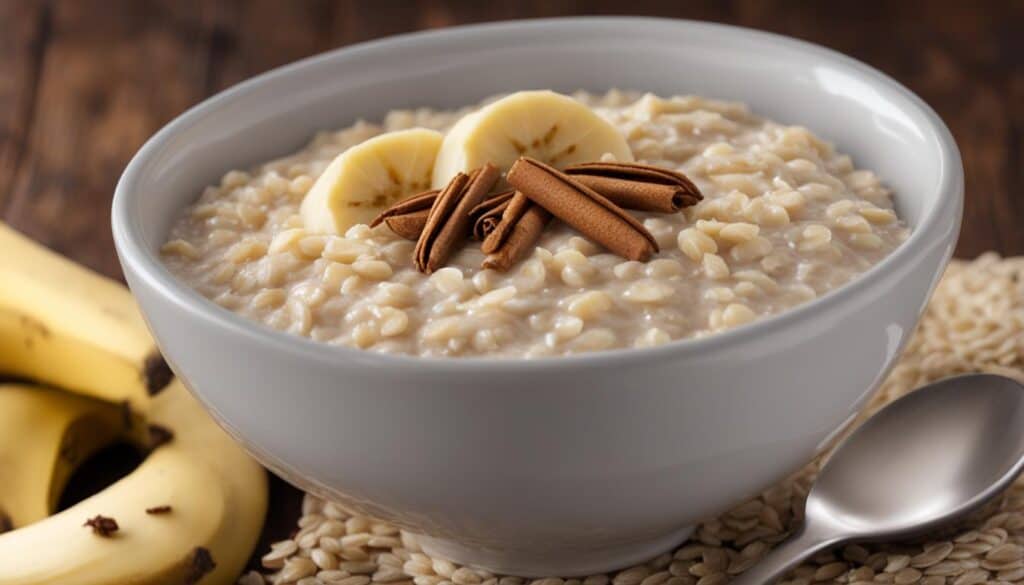
“Adding a small portion of oatmeal to a low fiber diet can provide essential nutrients and a hearty breakfast option.”
Low Fiber Fruits: Options for a Low Fiber Diet
While fruits are generally a good source of fiber, there are still options that are low in fiber and can be included in a low fiber diet. These low fiber fruits provide various nutritional benefits and can be consumed in small amounts, making them suitable choices for those following a low fiber diet. It’s important to consider individual tolerance and consult with a healthcare professional or dietitian for personalized guidance.
Here are some examples of low fiber fruits that can be incorporated into a low fiber diet:
- Apricots
- Plums
- Cantaloupe
- Watermelon
- Pineapple
- Nectarines
- Papaya
- Bananas
- Strawberries
- Figs
- Peaches
These fruits can be enjoyed on their own, added to smoothies, or used as toppings for yogurt or oatmeal, providing a burst of flavor and natural sweetness to your meals. However, it’s important to note that while these fruits are low in fiber, they may not provide the same levels of fiber as other fruits. Therefore, it’s crucial to maintain a balanced diet and consider other sources of necessary nutrients.
Remember, if you have specific dietary restrictions or medical conditions, it’s always best to consult with a healthcare professional or registered dietitian who can provide personalized advice and guidance based on your individual needs.
Conclusion
In conclusion, a low fiber diet can be beneficial for individuals with certain health conditions or those preparing for specific medical procedures. By reducing the amount of fiber consumed, this type of diet aims to alleviate symptoms such as abdominal pain and diarrhea. However, it is important to ensure that nutritional needs are still met through other food choices.
While following a low fiber diet, it is crucial to consult with a healthcare professional or registered dietitian for personalized guidance. They can provide tailored advice on managing fiber intake and offer meal plans that meet individual needs. Gradually reintroducing fiber back into the diet after following a low fiber diet can also bring numerous benefits, such as improving gut health and reducing inflammation.
To summarize, a low fiber diet should be implemented under professional supervision and for specific purposes. It may provide relief for individuals with gastrointestinal conditions or those preparing for certain medical procedures. However, it is essential to consult with a healthcare professional or registered dietitian to ensure nutritional needs are met and to receive personalized guidance on managing fiber intake.
FAQ
What is a low fiber diet?
A low fiber diet, also known as a low residue diet, limits the amount of fiber consumed each day. It aims to reduce the undigested food moving through the gut, ease the workload of the digestive system, and decrease the amount of stool produced. This type of diet may be recommended for individuals with gastrointestinal (GI) conditions, those preparing for surgery such as a colonoscopy, or those experiencing certain symptoms like abdominal pain and diarrhea.
What are the types of fiber and their effects on the gut?
Dietary fiber can be divided into two types: soluble fiber and insoluble fiber. Soluble fiber absorbs water and turns into a gel-like substance during digestion, while insoluble fiber does not dissolve in the stomach. Soluble fiber is found in foods like oats, apples, and beans, and it may have fewer GI irritations. Insoluble fiber, on the other hand, is found in foods like whole grains and may cause discomfort for some individuals. Knowing the types of fiber you’re consuming can help prevent unpleasant symptoms.
What are some low fiber foods to include in a diet?
Some examples of low fiber foods to include in your diet are white bread, white pasta, white rice, low fiber cereals, canned or boiled vegetables, seedless and skinless fruits, fruit juices without pulp, cantaloupe, honeydew melon, and peeled fruits like apples and pears. It’s essential to note that while these foods are low in fiber, they may not be the best options for long-term health as whole grains and other high fiber foods offer additional nutritional benefits.
What are some tips for following a low fiber diet?
Some tips for managing fiber intake include buying foods with less than 2 grams of fiber per serving, peeling vegetables and fruits, avoiding trigger foods, staying hydrated to prevent constipation, and avoiding insoluble fibers. Meeting with a dietitian can also provide specific meal plans and further guidance on following a low fiber diet.
What are the benefits of a low fiber diet for certain health conditions?
A low fiber diet can help manage symptoms of gastrointestinal (GI) conditions such as irritable bowel syndrome (IBS), Crohn’s disease, ulcerative colitis, and diverticulitis. Additionally, it may be recommended before surgery, such as a colonoscopy, to reduce the workload on the digestive system. However, it’s important to note that a low fiber diet is not intended for weight loss and should only be followed under medical supervision.
How do I gradually reintroduce fiber into my diet after following a low fiber diet?
After following a low fiber diet, it’s important to gradually reintroduce fiber back into your diet. This can help improve symptoms and provide numerous benefits, such as decreasing inflammation, improving gut microbiome, and reducing the risk of colorectal cancer. Start by adding a small portion of one high fiber food per day and monitor how your body reacts. It’s recommended to consult with a healthcare professional or registered dietitian for personalized guidance.
Can you eat oatmeal on a low fiber diet?
Oats are mostly high in soluble fiber, which is less likely to irritate the intestines compared to insoluble fiber. However, it’s recommended to eat a small portion of oatmeal and monitor any symptoms afterward. If oatmeal doesn’t cause any discomfort, it can be included in a low fiber diet. It’s important to note that individual reactions to foods may vary, so it’s best to consult with a healthcare professional or registered dietitian for personalized advice.
What are some low fiber fruits that can be included in a low fiber diet?
While fruits are generally a good source of fiber, there are still options that are low in fiber and can be included in a low fiber diet. Some examples of low fiber fruits include apricots, plums, cantaloupe, watermelon, pineapple, nectarines, papaya, bananas, strawberries, figs, and peaches. These fruits can be consumed in small amounts and provide various nutritional benefits, although they may be lower in fiber compared to other fruits. It’s important to consider individual tolerance and consult with a healthcare professional or dietitian for personalized guidance.





Leave a Reply